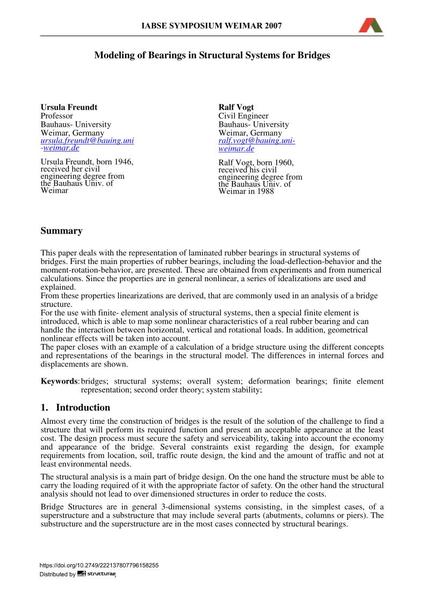Modeling of bearings in structural systems for bridges

|
|
|||||||||||
Bibliografische Angaben
| Autor(en): |
Ursula Freundt
Ralf Vogt |
||||
|---|---|---|---|---|---|
| Medium: | Tagungsbeitrag | ||||
| Sprache(n): | Englisch | ||||
| Tagung: | IABSE Symposium: Improving Infrastructure Worldwide, Weimar, Germany, 19-21 September 2007 | ||||
| Veröffentlicht in: | IABSE Symposium Weimar 2007 | ||||
|
|||||
| Seite(n): | 356-357 | ||||
| Anzahl der Seiten (im PDF): | 8 | ||||
| Jahr: | 2007 | ||||
| DOI: | 10.2749/222137807796158255 | ||||
| Abstrakt: |
This paper deals with the representation of laminated rubber bearings in structural systems of bridges. First the main properties of rubber bearings, including the load-deflection-behavior and the moment-rotation-behavior, are presented. These are obtained from experiments and from numerical calculations. Since the properties are in general nonlinear, a series of idealizations are used and explained. From these properties linearizations are derived, that are commonly used in an analysis of a bridge structure. For the use with finite- element analysis of structural systems, then a special finite element is introduced, which is able to map some nonlinear characteristics of a real rubber bearing and can handle the interaction between horizontal, vertical and rotational loads. In addition, geometrical nonlinear effects will be taken into account. The paper closes with an example of a calculation of a bridge structure using the different concepts and representations of the bearings in the structural model. The differences in internal forces and displacements are shown. |
||||
| Stichwörter: |
Brücken Theorie II. Ordnung statische Systeme Verformungslager
|
||||
